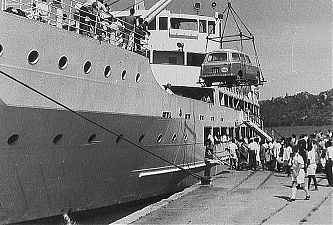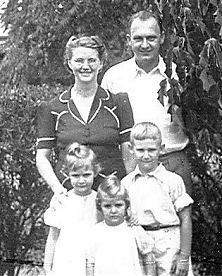From an early age, Joy Makumbe, the founder of Majolic Construction and The Joy Makumbe Trust, both based in Harare, Zimbabwe, has always been passionate about turning her ideas into tangible physical reality. Knowing that these realities assists women and girls in alleviating some of the problems they face daily with regards to water and sanitation gives her satisfaction.
Did you always want to be a civil engineer?
No, not really. I didn’t know much about it until I was attached to engineering companies during school holidays. Most of these companies were mainly involved with mechanical engineering but that is where I realised my passion for building things.
After graduation I mainly worked in consulting companies whose projects were mainly structural in nature. This was a good foundation for me as I worked with elderly white engineers who were really bent on detail, teaching, training and mentoring. From there I moved to another consulting company that exposed me to the projects management side of civil engineering.
Tell us about Majorlic Construction.
Majorlic Construction is a company I formed in 2008 after I felt the need to be directly involved in the communities, and to test my strength and capacity to build, grow and sustain a company. The name is a combination of letters from my first and last names.
Majorlic’s focus has been water and sewer reticulation networks and structural design. We have also incorporated the use of green technology in construction with the use of solar energy to provide water heating and lighting in the houses we construct. To date we have done servicing of residential stands, house and road constructions in Harare, Zimbabwe.
What challenges have you faced as a black African woman in engineering?
Most of the time people assume that I am a man. The community’s awareness with regards to women in engineering is still very low. As a result my gender makes it harder to get contracts because people lack the confidence that a woman can really deliver.
Contracts mainly come because of referrals from people who have worked with me and know my work. For me, there is no excuse for quality so it always comes down to proving myself more as an engineer.
What were the major start-up challenges?
Capital and not being known in the construction circles meant fewer contracts. Not many people want to engage an engineer that they do not know. When you get that opportunity to do a project, the project just looks too big in your eyes and can be overwhelming.
Looking back I have learnt that sometimes we are overwhelmed because we think we have to go at it alone but you will find that there are so many established companies who are willing to partner with you on some projects. Your company can learn from these established companies.
I know TechWomen 2015 was a life changing experience for you, tell us a bit about that.
You leave your country with one perspective on women, technology and science and you come back changed. I left the US with newly found relationships, sisterhoods, zeal, and a renewed form of energy.
I met a lot of powerful young women from different parts of the world who are making a difference in their home countries and beyond. This challenged me and I realised that I too could bring such impact.![]()
How do you connect your experience at TechWomen with your work?
During my mentorship I was attached to Sun Power – one of the major players in solar technology in the US. I realised that there was so much untapped potential in Zimbabwe for solar power on the domestic, industrial and agricultural fields. This was an area which we needed to explore more of in Zimbabwe.
Since then I have been looking at ways of introducing different forms of energy in Zimbabwe through my trust, The Joy Makumbe Trust. It has been difficult in the past couple of years to rely solely on Hydropower due to seasonal changes and drought patterns.
We have started exploring more on green technology and how we can use it to make our lives better. For example those in the rural areas have resources to use like Biogas, they just do not have the knowledge. We plan to bridge this knowledge gap in the communities.
Overall, my experience at TechWomen has given me lifelong networks of sisters across the globe. Sisters who share opportunities and information to build our businesses and increase impact in our communities. Sisters who share achievements to encourage each other and show that it can be done.
How has it been moving from being a lecturer to managing a multi-million dollar project in a foreign country?
Engineering is all about networks. I got this job because an engineer colleague of mine informed me of the opportunity and I submitted my CV. The thought of relocating was overwhelming and being part of a million dollar job funded by the World Bank made it worse. So many questions ran through my head, “am I woman enough to pull it through?” But I have a very supportive family that really cheers me on.
This contract came at the right time when I felt I was ready for something new. The TechWomen experience had elevated me to a level where going down again was not an option for me. I was restless. I needed to do more. I needed to make more impact. It has been challenging dealing with contractors and being in a different setting, but it has been an amazing experience.![]()
How do you describe your business model as you are currently based in Uganda?
I have two people on the ground whom I leave to the execution of the day to day running of the company and the trust.
My presence here in Uganda is an opportunity for the company to source deals and partnerships and penetrate the Ugandan market.
The Joy Makumbe trust tell me about that.
The Joy Makumbe trust is mainly about building awareness of engineering as a career to girls and career guidance for science and technology. I only got to know about the different types of engineering disciplines at university and I certainly did not want this to be what other young people go through.
We have been involved with so many schools for example Eaglesvale School in Harare, Zimbabwe and Bweranyangi Girls in Uganda. It is amazing how our girls are the same despite the boarders. The same passion to learn more on how they too can make tech an interesting career choice. I believe that wherever one is, they can always make a difference in our youth.![]()
How do you manage to balance the trust, your job and Majolic?
It is hard. You cannot be sleeping at 8 if you want all these things to work. Longer hours are required of you.
But I cannot belittle the use of networks and links. I have like-minded people who are on the ground for both Majolic and the trust.
Which African woman has the strongest influence on you?
My network of women engineers, who are both mothers and career women but who each and every day share success stories of how they have won awards on the international arena and how they are making a difference within their communities.
It inspires me knowing that it can be done because it is happening around me every day.
What should we look forward to in the next 5 years?
Majorlic will have international partnerships. By then, I hope I will have Ugandan engineers who I can collaborate with. Therefore, the time I am here, I am looking to creating relationships and networks that go beyond my day to day job.
The trust will make more impact in the communities. I look forward to expanding green technology usage throughout the country and reducing the strain on the country’s power grid.
Not forgetting of course, a lot more female engineers graduating from our institutions of higher learning! A lot more women in engineering and construction businesses! A lot more women leaving a mark in their communities and countries at large.
If you’d like to share your story with She Leads Africa, let us know more about you and your storyhere.

















 Karel Alois Strnad
Karel Alois Strnad

